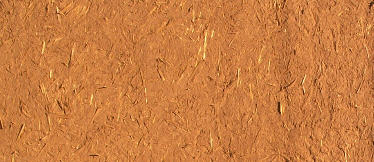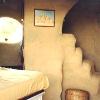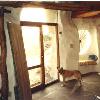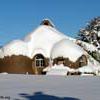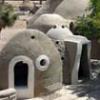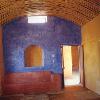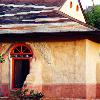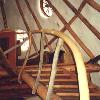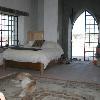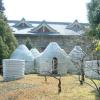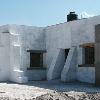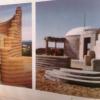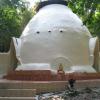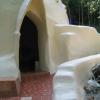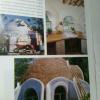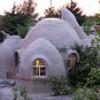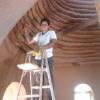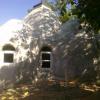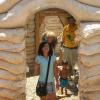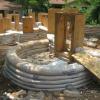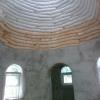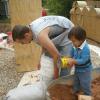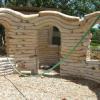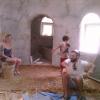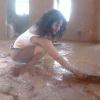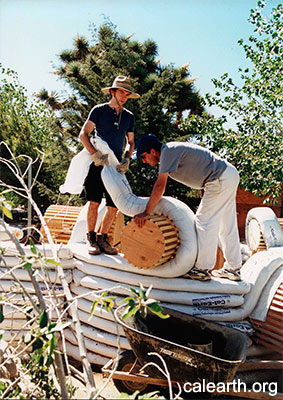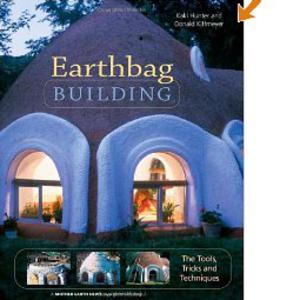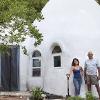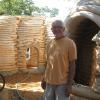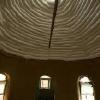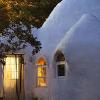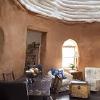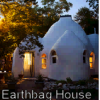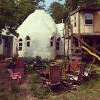Earthbags Around the World
Earthbag House in Downtown Austin
Environmentalist, humanitarian, and engineer Nader Khalili developed the idea of Earthbag, Flexible Form Rammed Earth, Super Adobe about 50 years ago. Nader recognized it's potential when he saw that it was very versatile and functional by the way it withstood time and the elements for holding back floods and with it's use as bunkers from the war.
He explored it's potential in order to submit it as a viable option for quality emergency housing to the United Nations. He also developed a school in Hesperia County California near LA where this technique has been taught for the past 30 years. Khalili organized extensive testing for Earthbag construction which exceeded it's testing apparatus' ability, proving it to be a feasible alternative housing option and one that could reasonably move it's way into a mainstream option. To read more about this incredible man and his school in the Mojave Desert, CA go to: http://calearth.org/
Resources
I am currently overwhelmed with everything and everyone who I'd like to give credit for that I admire in the earthbag and earth construction.
My goals is to give credit to every resource that I can think of eventually. Please send me an email if I can add you to this list and if for some reason I have failed to mention some other amazing builders or resources, I apologize. I hope to credit you soon as I get time.
-Thanks
Nader Khalili's Originator of earthbag building, School in Hesperia California www.calearth.org
Earthbag Building by Kaki Hunter and Doni Kiffmeyer
Gayle Borst, Austin Sustainable Architect, www.designbuildlive.org
Lester Germanio, Austin Engineer
Dr. Owen Geiger, Author and engineer specializing in sustainable building of all techniques, especially earthbag and earthen http://www.grisb.org/
Kelly Hart , Tons of info about earthbag building http://earthbagbuilding.wordpress.com/
Scott Howard, Beauiful projects, knowledgeable, workshops http://www.earthenhand.com/about.html
Frank Meyers, Authority for clay and earthen floors. Based in Austin http://www.thangmaker.com/about.htm
What is Earthbag Building?
Earthbag building uses polypropylene, burlap or another bag material to hold dirt that very closely resembles adobe and cob. These adobe, cob earthbags are filled on top of the wall scoop by scoop in order to avoid the heavy lifting and drying of 60 pound bricks.
Usually between each row of bags are strands of barbed wire adding further tensile strength to the structures.
These homes are noteable due to their low cost in materials, low skill in building experience and outstanding strength and for their resistance to hurricanes, tornadoes, earthquakes, fire and termites. And, of course, for their green eco friendliness and sustainability.
There are Earthbag projects all around the world amongst a growing number of people. To name a few: Kelly Hart, Colorado; Owen Geiger, Thailand; Sun House Haiti; Japan, Tenri Univ, Professor Inoue, kaki Hunter and Doni Kiffmeyer, Moab; Scott howard, Thailand; Paulina Wojciechowska, Poland ...to name a few
"We know of earthbag structures in the following US states: AR, AZ, CA, CO, FL, GA, HI, ID, KY, MD, MI, MN, MO, NM, NV, NY, OH, OR, PA, SD, TN, TX, UT, WA We know of earthbag structures in the following countries: Argentina, Australia, Bahamas, Belize, Brazil, Canada, Chile, Costa Rica, Czech Republic, Dominican [...]" read more.....
~Earthbag Building Blog
Earthbag Building by Kaki Hunter and Doni Kiffmeyer
I would be remiss without mentioning the Book that changed my life and I suspect many people's lives, written by Kaki Hunter and Doni Kiffmeyer, Earthbag Building.
I can't give Kaki and Doni enough kudos for their style of writing and their knowledgeable insight. YOU MUST GET THIS BOOK, along with Nader Khalili's book if you really want to understand earthbag building and plan on an earthbag project.
I intend to write more on what I learned from their book and what I might add to it in my blog. I hope it will be helpful for future builders.
More ...
